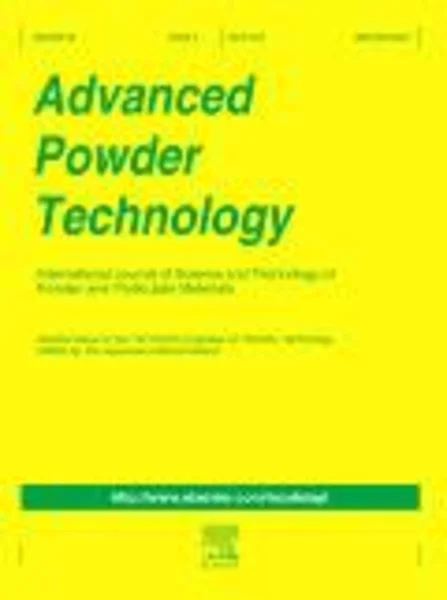-
quantifying drying performance of a filter dryer: experiments and simulations
جزئیات بیشتر مقاله- تاریخ ارائه: 1393/01/01
- تاریخ انتشار در تی پی بین: 1393/01/01
- تعداد بازدید: 709
- تعداد پرسش و پاسخ ها: 0
- شماره تماس دبیرخانه رویداد: -
drying is one of the most commonly used unit operations in the preparation of dry granules by thermally removing volatile solvent from the wet solid. the study focuses on the quantitative investigation of heat transfer in a filter dryer in the quest to determine the optimum drying conditions. consequently, contact drying kinetics of glassbeads–ethanol and lactose–ethanol system is investigated using an agitated filter dryer (charles thompson). discrete element method is employed to simulate granular flow, mixing and heat transport in the vessel. typical system with glass beads is numerically simulated using appropriate material properties and validated by the experimental findings. a parametric study for both simulations and experiments is performed to assess the effect of various conditions of wall temperature, fill level and impeller speed on the drying performance in the filter dryer. a high wall temperature showed an increase in the drying rate and a sharp rise in the average bed temperature, thereby decreasing the total time for drying operation. an increase in fill volume (bed depth) at constant wall temperature and speed resulted in a decline in the drying rate. the rotational speed had a nominal impact on drying of glass beads. hence low rotational speeds seemed optimal for contact drying.
مقالات جدیدترین رویدادها
-
استفاده از تحلیل اهمیت-عملکرد در ارائه الگوی مدیریت خلاقیت سازمانی و ارائه راهکار جهت بهبود
-
بررسی تاثیر ارزش وجوه نقد مازاد بر ساختار سرمایه شرکت های پذیرفته شده در بورس اوراق بهادار تهران
-
بررسی تأثیر سطح افشای ریسک بر قرارداد بدهی شرکت های پذیرفته شده در بورس اوراق بهادار تهران
-
بررسی تأثیر رتبه بندی اعتباری مبتنی بر مدل امتیاز بازار نوظهور بر نقد شوندگی سهام با تأکید بر خصوصی سازی شرکت ها
-
تأثیر آمیخته بازاریابی پوشاک ایرانی بر تصویر ذهنی مشتری پوشاک ایرانی (هاکوپیان)
-
ارزیابی نقش دلبستگی به مکان درطراحی سیتی هال اهواز
-
معرفی روش نوین آنالیز سریع آسیب پذیری لرزه ای ساختمانها و کاربرد آن در مدیریت بحران با بهره گیری از تکنیک gis
-
نقش فن آوری اطلاعات و ارتباطات در فرایند یاددهی – یادگیری درمحیط های آموزشی
-
using neural & fuzzy-neural approaches in school trip distribution modeling
-
solution of two-dimensional shallow water equations by tvd-maccormack scheme
مقالات جدیدترین ژورنال ها
-
مدیریت و بررسی افسردگی دانش آموزان دختر مقطع متوسطه دوم در دروان کرونا در شهرستان دزفول
-
مدیریت و بررسی خرد سیاسی در اندیشه ی فردوسی در ادب ایران
-
واکاوی و مدیریت توصیفی قلمدان(جاکلیدی)ضریح در موزه آستان قدس رضوی
-
بررسی تاثیر خلاقیت، دانش و انگیزه کارکنان بر پیشنهادات نوآورانه کارکنان ( مورد مطالعه: هتل های 3 و 4 ستاره استان کرمان)
-
بررسی تاثیر کیفیت سیستم های اطلاعاتی بر تصمیم گیری موفق در شرکتهای تولیدی استان اصفهان (مورد مطالعه: مدیران شرکتهای تولیدی استان اصفهان)
-
بررسی نقش مدیریت منابع انسانی پویا در ارتقاء بهره وری و عملکرد کارکنان شرکت آپاداناسرام
-
عقد ضمان در نظام بانکی
-
بررسی اصول و مبانی اثر معنویات دینی در زندگی اجتماعی دانش آموزان
-
دکترین رس ایپسا لوکویتور و کاربرد آن در مسئولیت مدنی res ipsa loquitur
-
the relationship between working capital management and criterions for value-based performance of the companies listed in tehran stock exchange




سوال خود را در مورد این مقاله مطرح نمایید :